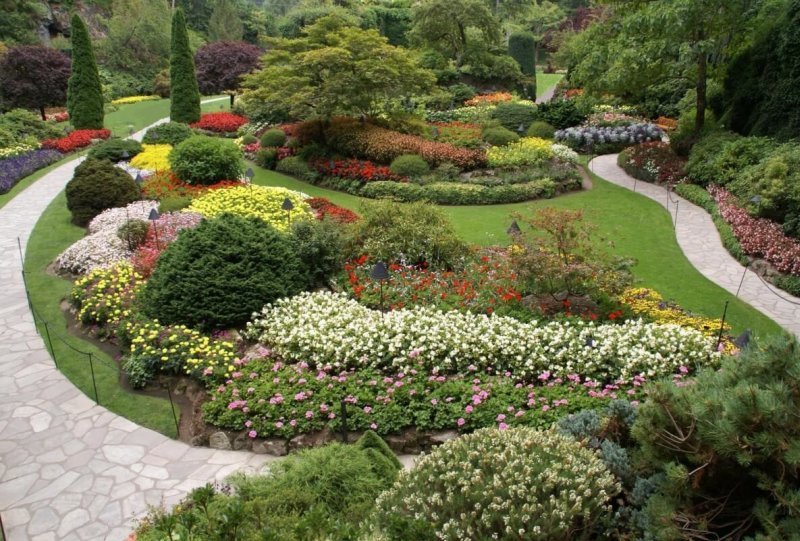Our landscapes can occasionally go out of control, overgrown, or neglected. The weather, hectic schedules, or a lack of attention are some of the causes of this. With the appropriate methods and plans, though, you can succeed. Your garden can be revitalised and restored with speed and effectiveness.
We will explore practical garden strategies in this tutorial. They will assist you in revitalising your garden and taking back command of your outdoor area.
Assess Your Landscape
Before restoring the garden, assess its current state. Walk through your garden. Evaluate the level of overgrowth, weed infestation, and plant health issues. Find areas needing urgent attention. These areas may have overgrown shrubs, tangled vines, or crowded flower beds. Note any structural damage. Also, note any drainage issues or hardscape deterioration. They may need to be fixed. By doing a thorough assessment, you’ll gain valuable insights. You’ll learn the amount of work needed to restore your landscape well.
Clean and Clear Your Garden
Start your garden restoration by prioritising cleanup. Remove any overgrown plants, weeds, and rubbish. First things first, get rid of any fallen leaves, branches, and other organic materials. These can have collected on your walks, lawn, or garden beds. To trim overgrown plants, trees, and shrubs, use hedge trimmers, loppers, or pruning shears. Cut them to a size that is manageable.
Trim dead or sick plant material. Remove any invasive weeds or plants. They are taking space and resources. Consider renting or hiring a garden design company. This could include chainsaws, brush cutters, or wood chippers. It is for larger cleanup jobs or clearing dense vegetation.
Renovate Your Garden Beds and Borders
First, clear the garden of debris and overgrowth. Then, renovate the garden beds and borders. This will improve how they look and work. Use a sharp spade or edging tool to edge garden beds. This creates clear borders. It stops grass and weeds from invading planting areas. Add compost, aged manure, or organic fertilisers to soil. This will improve its fertility and structure and provide nutrients for plants.
Consider mulching garden beds. Make use of organic materials such as shredded leaves, wood chips, or straw. This will control soil temperature, retain moisture, and inhibit weed growth. Plant fresh plants, annuals, or perennials. They will make your garden beds more interesting and colourful, filling in any gaps.
Lawn Care
Revitalise your lawn and turf areas. They will become a lush, green carpet that adds to the beauty of your landscape. Start by aerating compacted soil. This will improve air and water penetration and promote healthy root growth. Plant a high-quality grass seed blend on thin or bare patches. Use a blend suitable for your region and lawn type. Apply a slow-release fertiliser. It provides key nutrients for grass growth and development. Water the grass well. This ensures proper germination and establishment.
You want your lawn to stay neat and even, so mow it at the right height. You can also edge your walkways, driveways, and flower beds for a polished look. Consider using sustainable lawn care practices. These include mowing less. Leave clippings on the lawn and use natural or organic lawn care products. They minimise environmental impact and promote long-term turf health.
Enhance Your Landscape
Finish your garden restoration project. Add features and accents to create interest and focal points. Add decorative elements. These could be items like trellises, birdbaths, or garden statues. They provide your outdoor environment with artistic flair and vertical appeal. Waterfalls, ponds, and fountains are great. They draw wildlife to your garden and produce calming noises.
Plant container gardens. Plant vibrant flowers, decorative grasses, or herbs inside of them. They provide your landscape design more adaptability and movement. Consider adding outdoor lighting. This could include path lights, spotlights, or string lights. It will extend the enjoyment of your garden into the evening. It will also create a warm and inviting ambience. By improving landscape features and accents, you’ll enhance the garden’s look and feel. You’ll also create a welcoming outdoor space for relaxation and enjoyment.
Implement Sustainable Garden Practices
Keep your landscape beautiful and vital. Do this by using sustainable maintenance practices. These practices promote long-term health and resilience. Use water-wise gardening techniques. There’s drip irrigation, rainwater harvesting, and soil moisture monitoring. They save water and reduce waste. Use organic mulches and fertilisers to enrich soil. They boost fertility, prevent weeds, and spur healthy plant growth without harmful chemicals. Practice IPM strategies. These include cultural, biological, and mechanical controls. They manage pests and diseases well while minimising harm.
Prioritise good plant care. This includes regular pruning and timely removal of dead or diseased plant material. These practices prevent pests and promote growth. By using sustainable maintenance practices, you’ll create a thriving landscape. It will flourish with minimal inputs and benefit both people and the planet.
In Conclusion
Fixing an out-of-control landscape may seem hard. But, with the right strategies, it’s possible to transform your outdoor space fast. To revive the garden, first assess its state. Then, prioritise cleanup and clearing. Next, renovate garden beds and borders. Also, revive lawn and turf areas. Finally, improve landscape features and accents. Use sustainable maintenance too. This will create a beautiful outdoor oasis.
You might be facing a neglected backyard, an overgrown garden, or a tired-looking landscape. These garden strategies will help you revive your landscape. You can do it with confidence and success.

